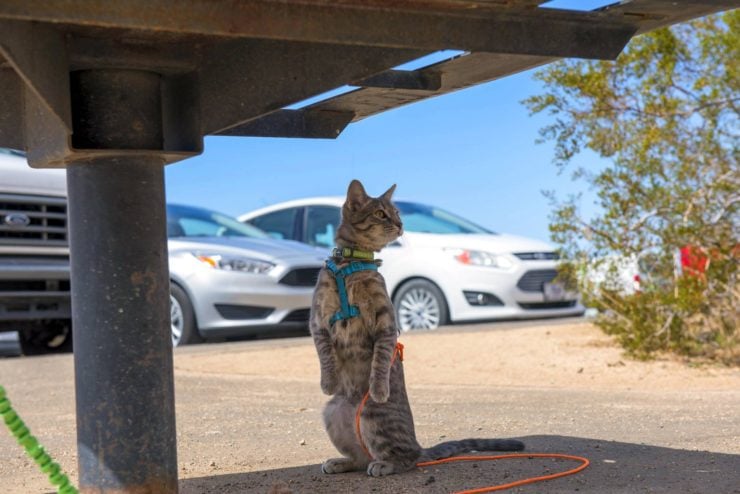Have you ever wanted to train your cat to walk on a leash? Outdoor life in populated areas is harsh for cats, but that does not mean they should spend all their life indoors.

As we already concluded in one of our previous articles, it’s not at all dumb to walk a cat on a leash, stating you do keep two things in mind.
First, cats are not dogs, and they walk on a leash differently. Second, to get your cat to enjoy walking on a leash, it’s necessary to carry out proper training.
We already talked about the first one, but today we are going to explain how to leash train a cat.
- Get a leash and a harness intended for cats. Cats should not be walked on a collar, like dogs, but on the harness that supports the whole body. If you do walk your cat on a necklace, chances he will escape are high.
- Allow your cat to get familiar with the harness. Give him to sniff it, or even leave it close by his bed, so your cat gets to accept the harness as an everyday object. How long should this occur, though, depends from case to case. Sometimes, it might be as easy as letting your cat sniff it and then proceeding further almost instantly.
- Put the harness on your cat. Do it indoors and observe your cat’s reaction. If he seems upset about the fact, remove the harness and proceed leash training with the previous step. If he’s okay, you can keep it longer, but continue to observe his reaction.
- Remove the harness and give your cat treat. This will make him associate leash training with something positive. Something to wait for.
- Repeat two above steps as often as you can. Gradually increase for how long the harness is kept on, and subsequently monitoring your cat’s behavior.
- Try to attach the leash and hold it. Do not pull your cat, but let him get used to it being there. Try to redirect his attention towards a toy, food, or petting. As we already talked in our preceding article, cats should not heel or follow you, as dogs do. The leash prevents your cat from running away. The trick is — you follow wherever your cat wants to go. Of course, if you wish, you can try to direct his movements. Once again, make sure to watch your cat’s behavior and release the leash if signs of stress appear. To succeed in leash training a cat, it’s crucial you do not let your cat associate the leash with something negative.
- Reach the state when you can walk your cat on a leash indoors without any stress. Be ready, it may take some time, but if you do your job, and do not rush, your cat will adapt to walking outdoors easier.
- Open the front door and let your cat go out. If you have any other pets, like a dog, best if you can guarantee he is not there to bother, at least initially. Also, an essential part of the leash training a cat is that you allow the animal to proceed on his own pace. Open the door, and let the cat dictate how far he wants to go if he wants at all. Again, if you wish, you can try to direct him by use of a toy or treats. Many cats, however, will not pay attention to them while being outdoors.
- Keep walking your cat on a leash. If you reached the state described in the point #7, the next part, whether indoors or outdoors, remains the same. You let your cat dictate where he wants to go, do not pull and follow him. The leash is to keep him safe.
You probably will see your cat undergoing some amount of stress when walking on a leash outdoors. That is okay if you keep two more things in mind:
First, always let your cat dictate the pace during the leash training. And second, ensure he still has a return path available (for example, doors are open).
If you do so, your cat will be more confident, and you will find it is much more comfortable to train your cat to walk on a leash.
